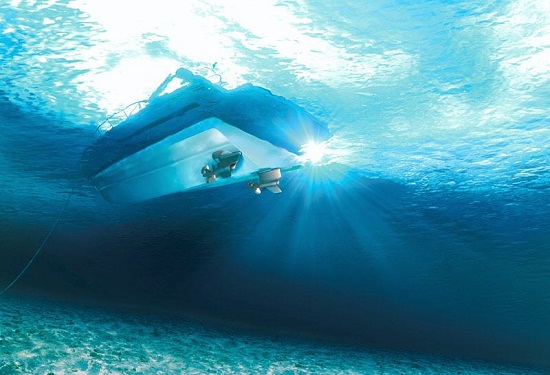
It has been said that the only thing that remains constant is change, and this is certainly true in the world of modern technology. What we consider commonplace today could be easily rendered obsolete tomorrow. And let’s face it, no one likes buying a new smartphone every six months, let alone larger and more expensive technological investments. Why spend your hard-earned money on something just because it is new? Newer does not inherently mean better, especially with technology. New products and updates can often be prone to initial defects and malfunction, so taking the time to conduct thorough research always pays off. But even then there are no guarantees once you decide to make a switch. The “latest thing” may not be “greatest thing” after all, but by then it is too late. Your needs have not been met but you’ve already devoted too much time and money to this decision to turn back and now you’re stuck with your choice. For this reason, there is typically an inherent distrust of innovations that challenge our own experiences and preconceptions – instead of giving them a fair chance, we often tend to project our fear of the unknown onto new and evolving technologies that we don’t fully understand.
The marine diesel industry is no different, and given the substantial investments often required of those involved in commercial and luxury boating alike, vessel owners of all backgrounds have been especially reluctant to make certain developmental leaps. That said, recent innovations in propulsion like the introduction of the pod system have been controversial and divisive, incredibly popular with some factions and regarded with a great deal of suspicion by others. Pod drive propulsion systems like the Volvo Penta IPS have been commercially available for hardly a decade, and yet this new technology has already managed to rival the popularity of many inboard shaft systems. These new propulsion systems have some serious advantages over their trusted predecessors, but as with any new technology, many factors must be considered before decided what is right for you and your marine diesel needs. Is a pod drive system the right choice for you?
The first pod drive systems were actually first introduced in the mid 1950s and were typically reserved for massive commercial and industrial vessels. Either diesel powered or electric, these versions were often large enough for a full grown man to stand inside the housing. Known by the generic name “azimuth thrusters”, these early versions did provide increased maneuverability but were still a far cry from the impressive, sleek models from Volvo Penta that we are familiar with today. First introduced in 2005, the Volvo Penta IPS may not have been the first pod system around, but it was the first iteration to take the luxury boating world by storm with its simplicity and functionality. With its patented forward-facing, counter-rotating propellers, the IPS was nothing quite like anything that came before and offered a litany of performance advantages.
Many initially found the forward-facing propeller design to be awkward and intimidating. It definitely appears to be a more delicate design at first, but in fact it offers your vessel added stability and hydrodynamism. As the propellers align with the forward motion of the boat, the Volvo Penta IPS managed to cut the drag generated by the downward angled propellers of traditional inboard systems, increasing horsepower, acceleration, and fuel efficiency of a vessel. Despite their fragile appearance, early “azimuth thruster” pod drives were used for powerful ice-breaking vessels – likewise, if a modern diesel vessel were to run aground or encounter another dangerous collision, the forward-facing IPS is designed to separate from the hull, reducing the potential damage encountered with an inboard alternative. This greatly reduces the potential cost of repairs by protecting your vessel’s delicate hull. Installing a pod drive won’t just give your vessel improved performance and safety, but it can even allow you to expand the recreational space of your craft. Since these engine systems are also much more compact than the inboard alternatives, installing one allows for much greater cabin space in the vessel for you and your guests. The drive’s underwater position also means a quieter, smoother ride with fewer noxious exhaust fumes.
However, the factor that makes pod drives like the Volvo Penta IPS so unique and appealing is the inclusion of a joystick control system. This makes maneuvering even the most cumbersome vessel possible with the wave of a hand. Instead of doing battle with throttles and shift levers, manipulating your vessel in and out of port is now as simple as pushing or pulling your joystick in the desired direction, allowing you to perform 180 degree turns and more with ease. And without the outboard engines hanging off the back, these procedures are even easier. This innovative joystick based control system can make even the most inexperienced look like a professional behind the wheel.
With any technological innovation, there is usually a tradeoff of some kind. With pod drive systems, the main disadvantage is the cost. Equipping a pod drive requires certain specifications of your vessel’s hull, so unless your vessel was built with one in mind from the beginning, there will be a costly redesign and ballasting process to make sure your vessel prepared. And as with any state-of-the-art technology, regular maintenance is required – in this case, every year or 250 engine hours, whichever comes first. This can be more than what many casual inboard system owners are accustomed to, but when combined with the annual fuel savings and increased performance, many would still argue that the potential benefits far outweigh the potential deficits. So is a pod drive system for you? While it comes with a new learning curve, the advantages afforded to a vessel with one equipped aren’t easy to ignore.
![]()